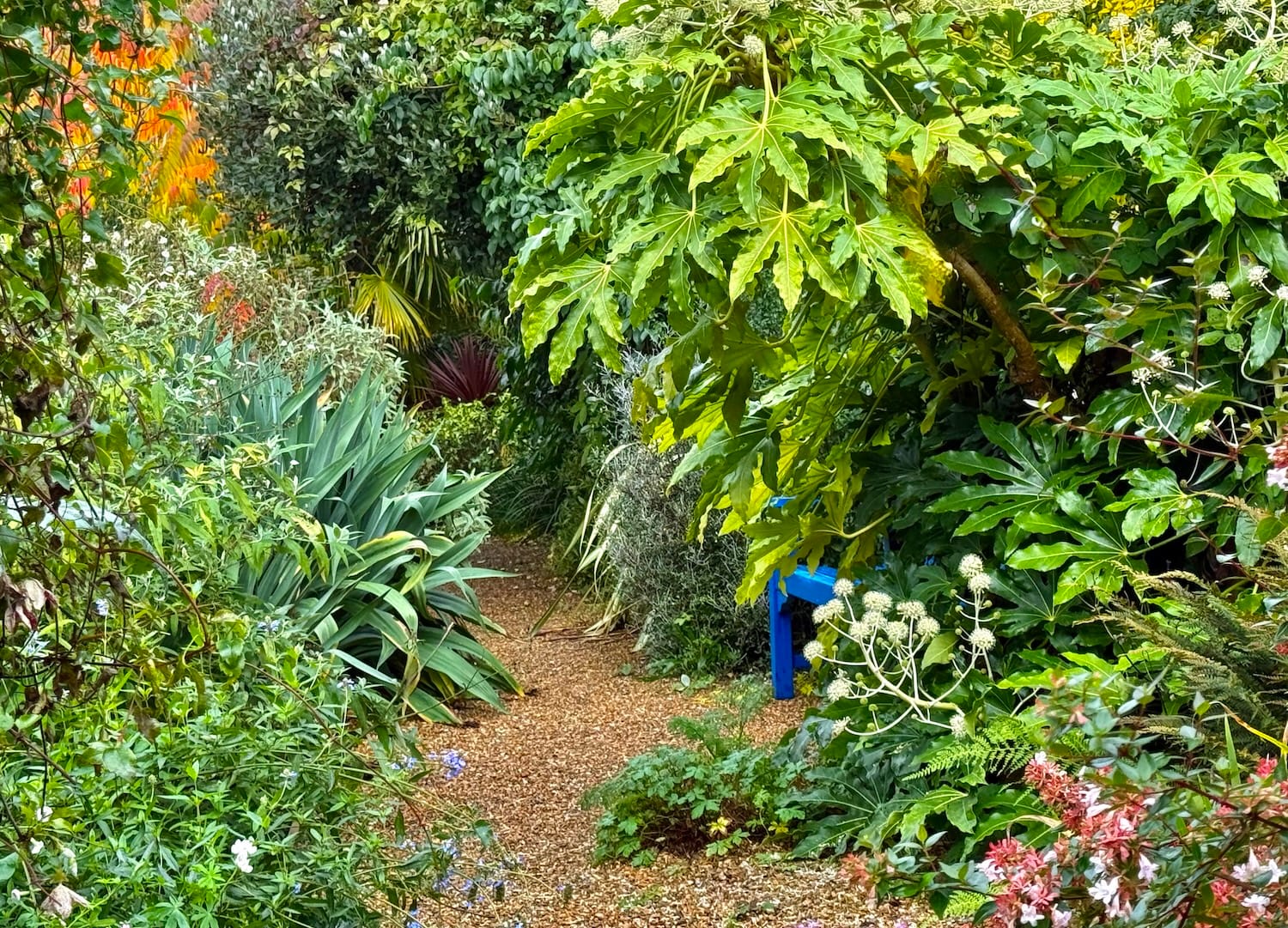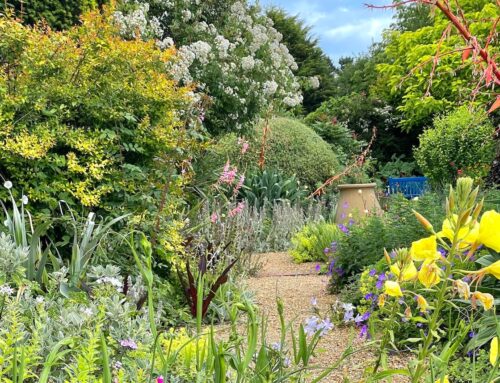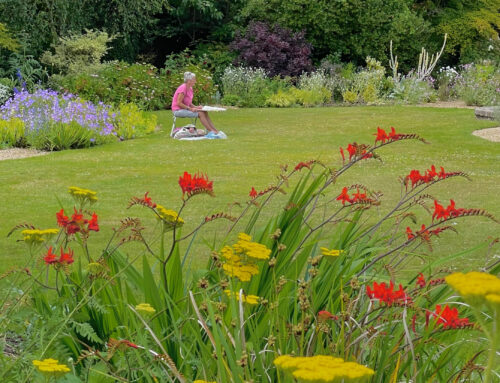 Every garden should include plants with contrasting leaf shapes and textures to provide year-round interest. It is often difficult, however, to find broad-leafed plants that do not lose their leaves in winter, especially in northern climates.
Every garden should include plants with contrasting leaf shapes and textures to provide year-round interest. It is often difficult, however, to find broad-leafed plants that do not lose their leaves in winter, especially in northern climates.
This month’s plant-of-the-month is just such a plant. Though Japanese Aralia (Fatsia japonica) only tolerates temperatures down to -15 °C (5°F), in more temperate climates it is a bold, muscular plant that retains its large, deeply lobed leaves all year round. A winner of the Royal Horticultural Society Award of Garden Merit, it thrives in any well-drained soil and will tolerate dry conditions once it is established. Very wet soil can lead to root rot, however, and it should be protected from heavy winds which can damage its leaves.
We grow Japanese Aralia in several areas of the Garden here. Our favourite is a wonderful old specimen growing against the brick wall in the Walled Garden (in full sun) next to one of John Brookes’ blue benches. It shades the bench in summer and offers a dramatic contrast to the smaller shrubs around it in all seasons, including yucca-leaved beschorneria which has robust grey-green pointed leaves and glossy abelia which has small, fine evergreen leaves and pale pink flowers in Autumn.
In general, Japanese Aralia is a perfect architectural back drop in mixed borders, especially in shady areas where their large, glossy leaves stand out against finer leaved or deciduous shrubs and trees. Although they can grow up to 3m (10ft) tall and 2.5m (8.5ft) wide they are also great focal points in city plantings and smaller gardens because they can easily be pruned and kept in proportion to other plantings. In fact, they can tolerate severe pruning when necessary and will grow back quickly. Pruning can be done at any time of year.
Native to South Korea and Japan, this shrub blooms in Autumn, bearing unusual creamy white flower clusters that are popular with various pollinators. The flowers are followed by small back berries in winter that are devoured by birds.
If your climate or conditions do not permit you to grow Japanese Aralia outdoors, you will find they grow very well in pots that are left indoors year-round or taken outdoors in summer. Pots should have adequate drainage holes, and the plants should be watered only sparingly from mid-autumn to early spring when they are dormant. They may benefit from spritzing if the house is very dry.
The plant’s Latin name – Fatsia – may come from the Japanese word for eight, probably a general reference to the number of lobes on its palmate leaves which is odd as the leaves always have more or fewer lobes and always an odd. The specific epithet – japonica – comes from the Latin word for ‘Japan’.






